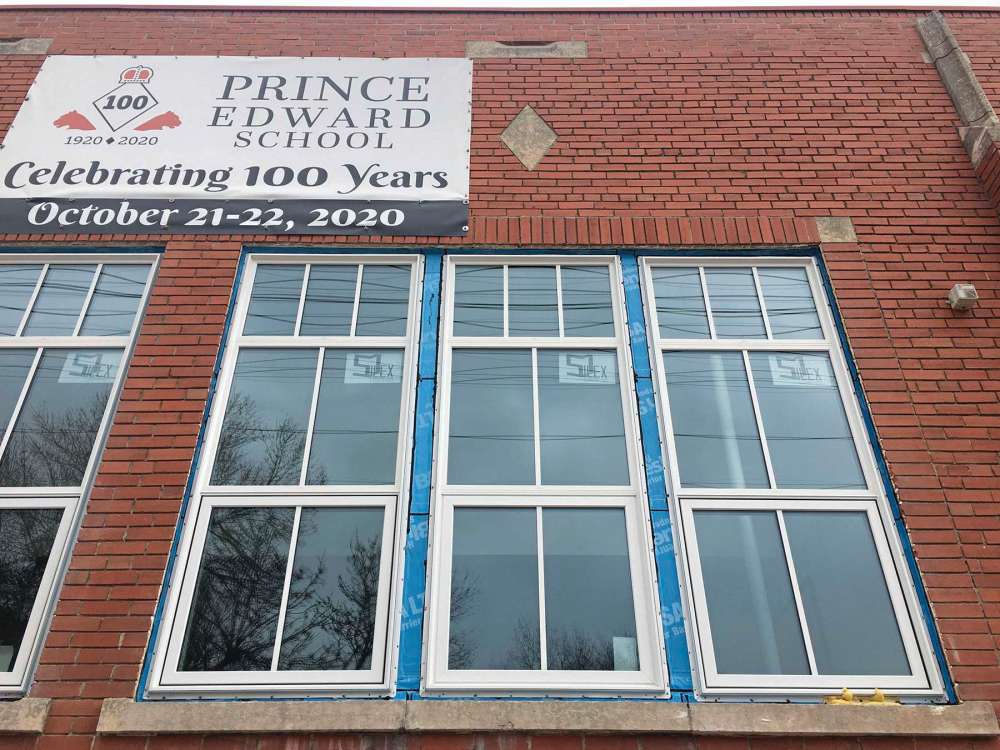Old and inefficient becomes new and innovative
Advertisement
Hey there, time traveller!
This article was published 27/04/2021 (1646 days ago), so information in it may no longer be current.
To fight climate change, people are looking at things in new ways.
One new way is the Life Cycle Assessment for buildings – a standard calculation of all energy use (detrimental carbon emissions) throughout a structure’s lifespan. Also termed “embodied energy,” this calculation begins at the point of resource extraction and continues though to construction and maintenance and includes, if a building is demolished, this energy cost as well as energies spent in new build replacement.

With this analysis, better choices can made at any point in a building’s evolution.
This has been put into action at Prince Edward School.
(Can you imagine its embodied energy up until now, beginning with considerations at the limestone quarry, brick foundry or its first coal fired boiler?)
Prince Edward School opened in 1920 with a restrained but formidable Collegiate Gothic design that hinted at the 20th century stylistic simplifications that were to come.
Imposing expanses of bright red brick contrast dramatically with its cream coloured Tyndall stone window surrounds and stark. solitary diamond-shaped keystones.
Large windows created focal points along the building in clusters of “three over two” glass panel designs. They were beautiful, functional and state of the art in 1920 but thermally they were very leaky. Roller shades dampened their heat in summer. Over the years, they were filled in to reduce energy costs. Only a few small window openings remained within their original lofty silhouettes.
But a change began to occur at the school last month. Windows on each side of the Brazier Street entrance looked strange – one side still had the relatively recent window infill design, while on the other side it appeared the original windows had been replaced.
“We’ve got one window to go”, Principal Kai Jacob said last month, adding that additional finishing work must still be done.
Jacob said the district’s maintenance department applied for and received a grant through the Climate Action Incentive fund. Working from old photographs, they recreated the original window design with top efficiency fibreglass framing.
Like something out of a James Bond movie, the newly developed but traditional looking windows hold remarkable and surprising capabilities.
The glass reflects, absorbs and transmits visible light, heat and ultraviolet radiation in a combination to fit local climate conditions. In practical terms, heat is kept out in summer, warmth is held inside in winter, and unwanted light spectrums are blocked. The result is less use of electric lights and heating; carbon emissions are thus reduced.
“But it’s much more impressive on the inside looking out,” Jacob said.
When I visited an early years classroom, students graciously welcomed me to a beautiful room that once again holds a profoundly impressive vista and is flooded with a comfortable light.
I have many fond memories of Prince Edward, where I was a student. Its interior spaces were impressive even then. Its enhanced beauty today will forge many more fond memories of learning, while helping to preserve the planet.
Shirley Kowalchuk is a Winnipeg writer who loves her childhood home of East Kildonan where she still resides. She can be reached at sakowalchuk1@gmail.com

Shirley Kowalchuk
East Kildonan community correspondent
Shirley Kowalchuk is a Winnipeg writer who loves her childhood home of East Kildonan, where she still resides. She can be reached at sakowalchuk1@gmail.com
Our newsroom depends on a growing audience of readers to power our journalism. If you are not a paid reader, please consider becoming a subscriber.
Our newsroom depends on its audience of readers to power our journalism. Thank you for your support.




